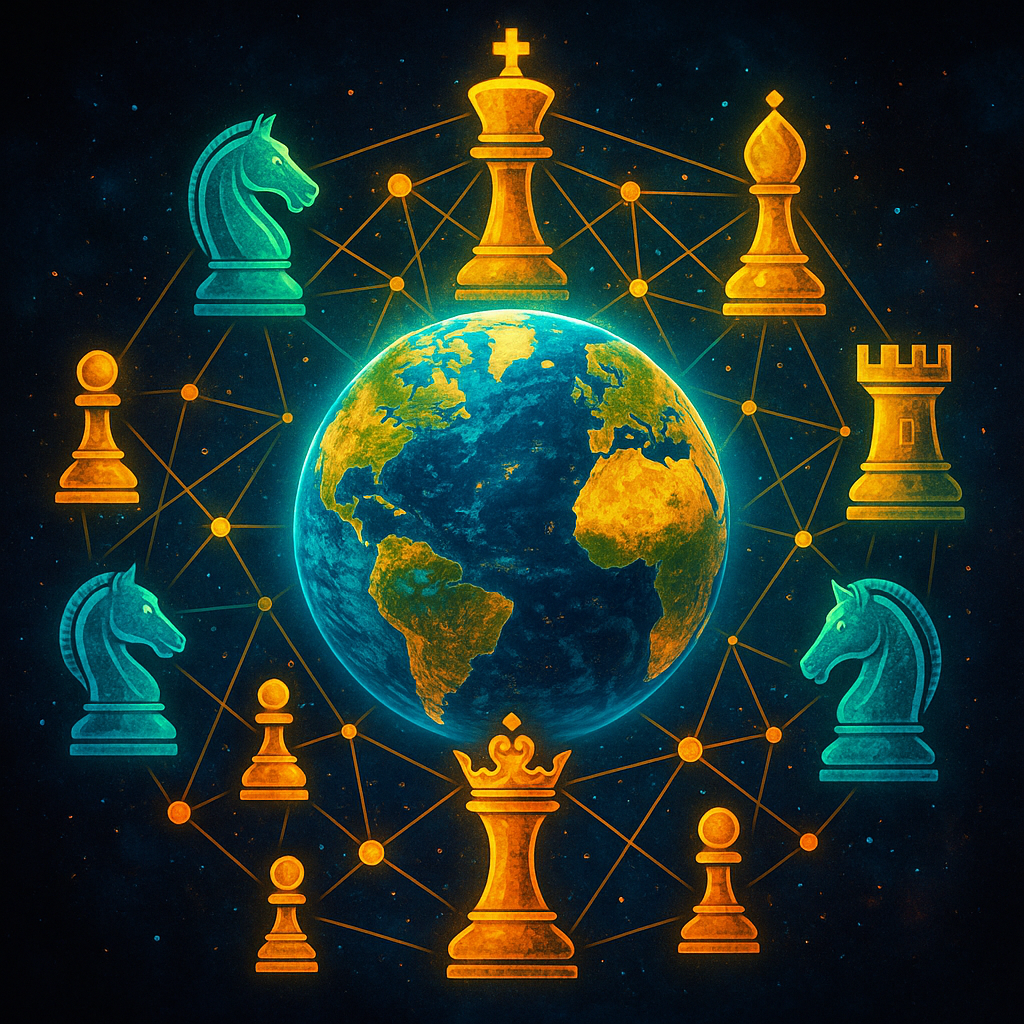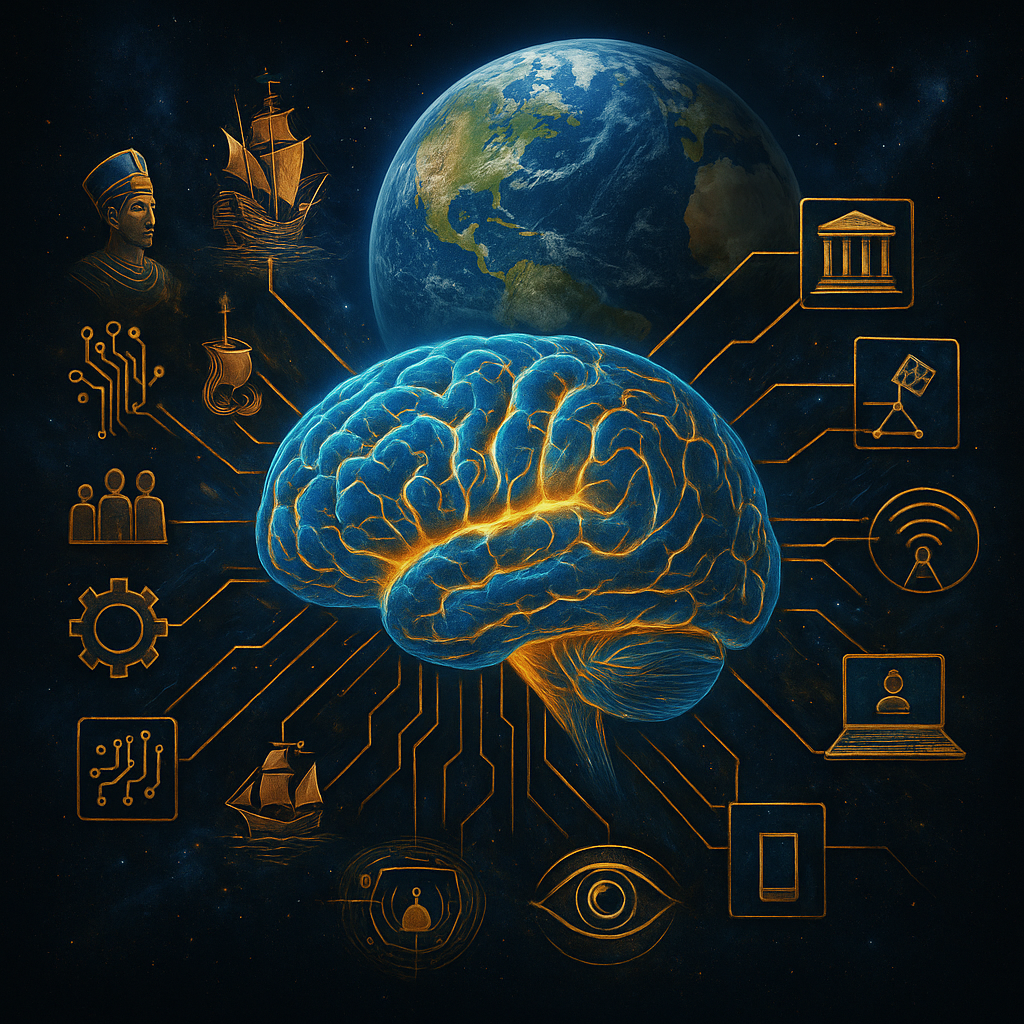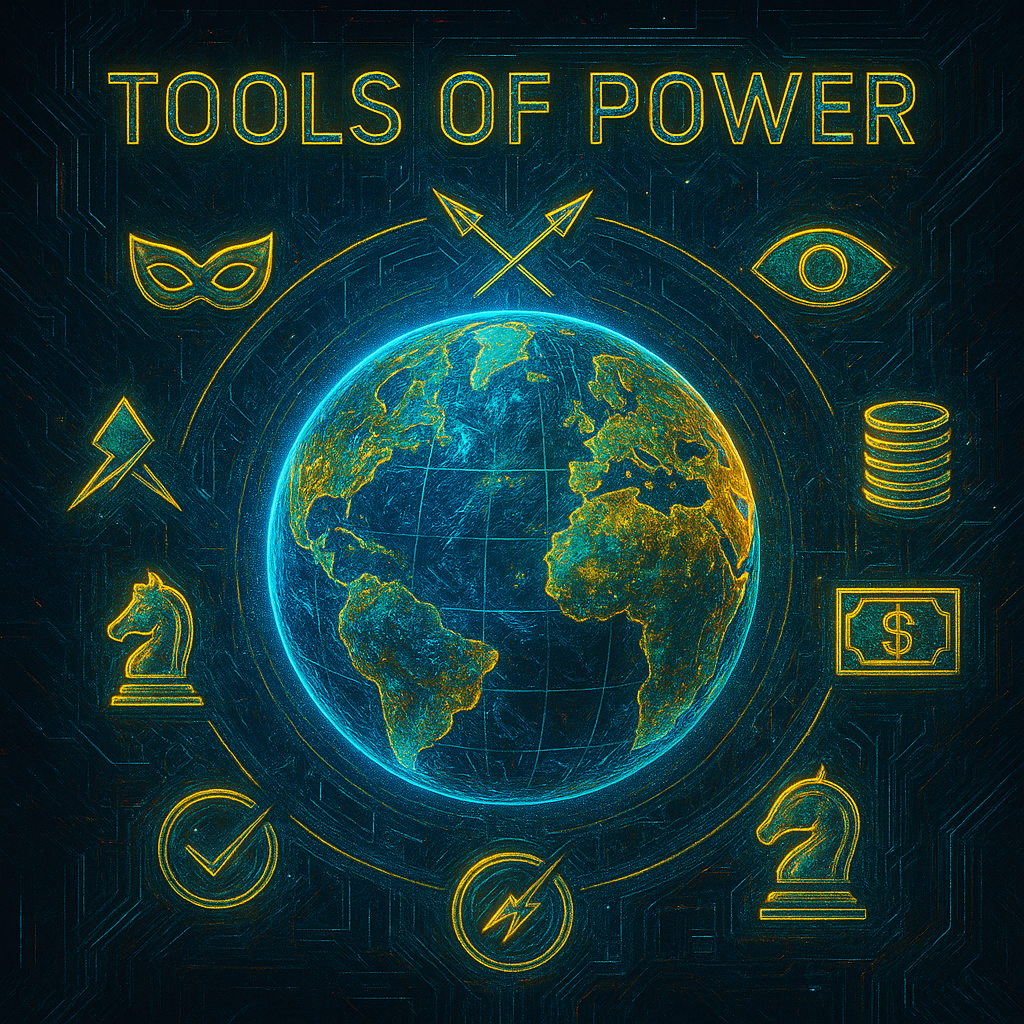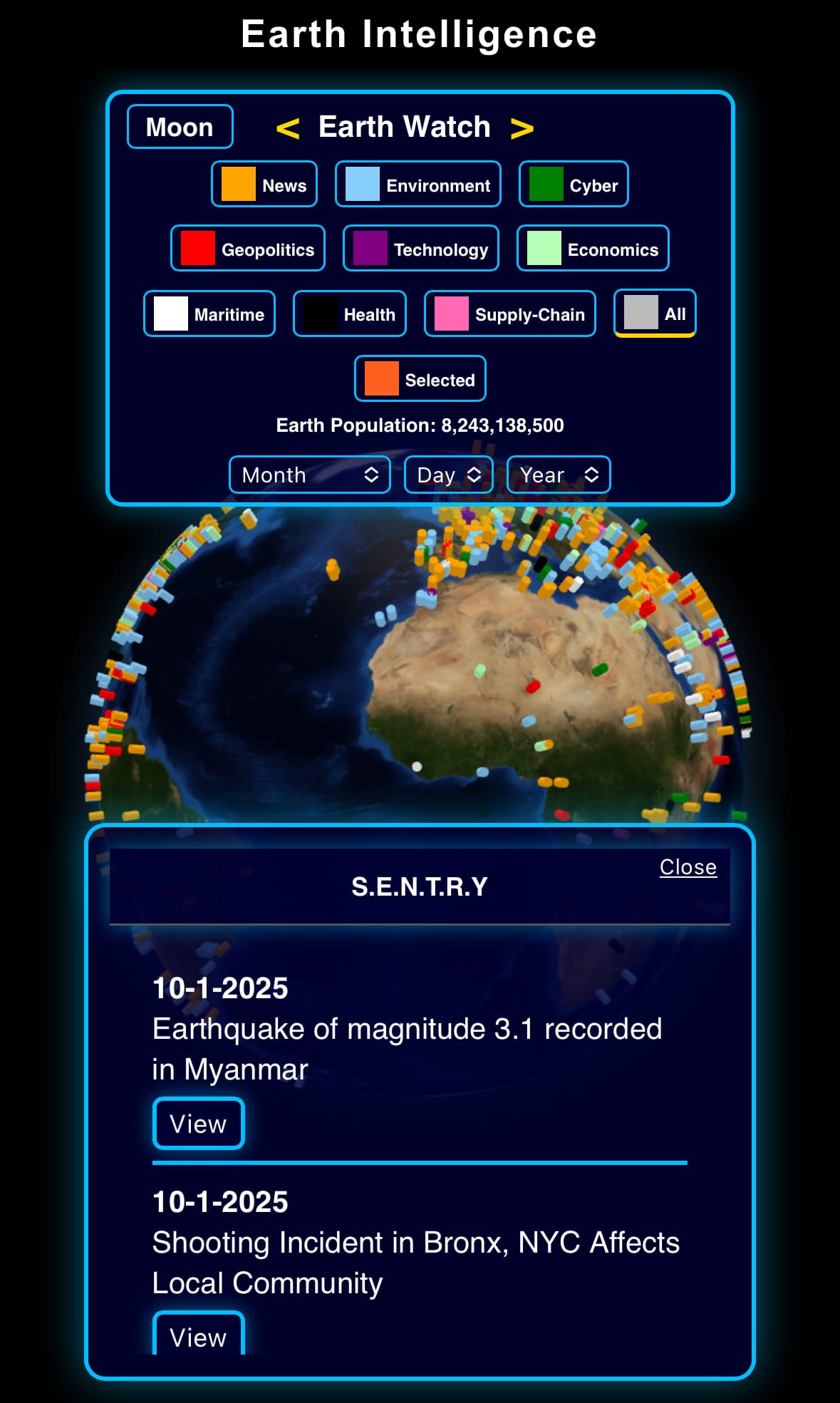Power Architecture: The Hidden Chessboard of Earth

Power is not chaos. It is architecture — deliberate, structured, and played like a chessboard. Governments, corporations, and individuals all use this architecture, knowingly or not. Each has pieces: kings, queens, bishops, knights, rooks (castles), and pawns. Each piece has its range of motion, its strengths and weaknesses, its sacrifices and its breakthroughs. To understand power is to see not only the players but the board itself — the invisible squares, the hidden levers, the unseen hands.
This chessboard is the operating system of Earth. It explains how empires rise, how corporations dominate, how individuals ascend, and how societies are shaped without seeing the mechanisms. Tools of power — information, money, force, ritual, technology — move the pieces. Mind control, information weaponization, and incentive design are no longer side tactics but the central mechanics of modern power. Mastering them means not just playing the game but shaping it.
Governments: The State’s Chessboard
Governments are the oldest players. Their pieces are institutions, leaders, and populations — the architecture of the state itself.
King (Executive Leadership): Presidents, monarchs, prime ministers. The king moves slowly and must be protected above all else. The fate of the game rests on this figure, even symbolically. Assassinations, coups, and forced resignations have toppled empires — from Caesar in Rome to Allende in Chile to Qaddafi in Libya.
Queen (Intelligence Agencies): The queen is the most powerful and versatile piece. Intelligence services (CIA, MI6, GRU, Mossad, MSS) operate globally, invisibly, lethally. They destabilize governments, assassinate leaders, steal secrets, run covert operations, and rewrite narratives. Iran 1953, Chile 1973, Ukraine 2014 — queen moves that changed global history without open war.
Bishops (Diplomats, Access Points, and Companies): Ambassadors, government officials, liaisons, NGOs, think tanks — and even entire state-backed companies — act as bishops. They cut diagonally across borders, bridging gaps between states and institutions. They operate quietly, shifting alliances, building soft power, and creating access. The Marshall Plan after WWII, Belt and Road today — bishop moves on a global scale.
Knights (Military, Security, and Defense): Armies, special forces, paramilitary units, cyber warfare teams — and even elite security contractors. Knights move in unconventional patterns, bypassing defenses. Blitzkrieg, special ops, black ops, cyberattacks — these are knight moves. They’re powerful but rely on intelligence to be decisive. Knights embody shock and unpredictability.
Rooks (Castles) (Institutions and Bureaucracies): Parliaments, courts, regulatory bodies, bureaucracies. They move straight, embodying stability, order, and grinding power. They form the walls and channels of action. They lack agility but provide continuity. Bureaucracies outlast kings, queens, and wars.
Pawns (The People): Citizens are numerous and expendable but capable of transforming the board when coordinated. Revolutions and mass protests can turn pawns into queens — French Revolution, Solidarity in Poland, Arab Spring. Pawns form the frontline of sacrifice and the potential for rebirth.
Governments historically used knights and rooks to conquer and hold territory. In the present, they rely on queens and bishops to destabilize, influence, and control narratives. In the future, they will deploy algorithmic queens (AI intelligence), autonomous knights (drones, robotic armies, cyberwarfare), and pawn manipulation (media, social credit, behavioral nudges) to win battles before moves are even seen.
Corporations and Institutions: The Market’s Chessboard
Corporations are private empires. Their reach crosses borders, their loyalty is to profit, and their architecture mirrors states. Their chessboard is markets, consumers, regulators, and competitors.
King (CEO/Executive Leadership): The CEO or board chair is the king. Limited in movement, highly visible, but the company revolves around them. The downfall of a king — a scandal, indictment, collapse — can bring an empire down overnight.
Queen (Security, Intelligence, Consultants): Corporate security, market intelligence, strategic consultants, and M&A teams are queens. They act globally and flexibly, gathering competitive intelligence, executing acquisitions, neutralizing rivals, shaping markets behind the scenes. Queens give corporations reach and lethality.
Bishops (Lobbyists, Lawyers, Strategists, and Companies): Bishops create access. Lobbyists sway governments, lawyers shape laws, strategists build alliances, and even subsidiaries or front companies act as bishops to infiltrate or influence markets. The power is indirect, diagonal, and often invisible until it reshapes the terrain.
Knights (Special Units, Security, Crisis Teams): Knights are unconventional assets — skunkworks divisions, elite project teams, corporate security contractors. They leap barriers, innovate suddenly, and disrupt competitors. Knights are unpredictable, decisive, and, when aligned with the queen, devastating.
Rooks (Castles) (Infrastructure and Bureaucracy): Supply chains, logistics, operations, and corporate bureaucracy. They grind forward, enforce order, and build the walls that protect corporate dominance. Rooks are the backbone of long-term survival.
Pawns (Employees, Customers, Data): Employees and customers generate labor, revenue, and data — the lifeblood of corporations. Individually expendable, collectively unstoppable. Strikes, boycotts, or viral campaigns can turn pawns into a force that reshapes the board.
Historically, corporations like Standard Oil used rooks (distribution) and bishops (lobbyists) to crush competition. Today, tech giants deploy queens (global surveillance, analytics) and knights (disruptive innovation) to dominate. Future corporations will wield predictive queens (AI, data), automated knights (robotic operations), and pawn armies (gamified customers and employees).
Individuals: The Personal Chessboard
Every individual has a chessboard. The scale is smaller, but the mechanics are the same. Life is a strategy game where self-mastery determines survival and growth.
King (Core Self): Your health, reputation, integrity. If the king falls, the game is over. Protect it at all costs.
Queen (Knowledge and Network): Your most powerful asset. Knowledge, skills, and networks move globally, open doors, create opportunities, and strike at weaknesses. A strong queen makes the individual unstoppable.
Bishops (Access Points): Mentors, allies, platforms, and companies you collaborate with. Bishops cut across barriers, quietly building your reach.
Knights (Creativity, Risk, Security, and Defense): Your adaptability, creativity, risk-taking ability, and ability to defend yourself. Knights are your bold moves — entrepreneurship, innovation, unconventional strategies, and security. They leap over obstacles, protect your assets, and outflank competition.
Rooks (Castles) (Habits and Systems): Your structures, routines, and disciplines. Rooks protect you, provide consistency, and grind forward. Systems turn chaos into stability and defense into progress.
Pawns (Daily Actions): Small, repeated choices. Seemingly expendable, but over time they transform the game. Habits, investments, and skills become new queens. Pawns create transformation.
History proves this. Alexander the Great used knight-like creativity and a queen’s intelligence network to conquer empires. Gandhi mobilized pawns (the people) into a force stronger than armies. Entrepreneurs like Musk and Bezos used queens (technology, networks) and rooks (logistics systems) to dominate industries. In the future, individuals will wield AI queens, digital knights, and armies of automated pawns — bots, assistants, tools — scaling influence far beyond personal reach.
The Invisible Levers of Power
Beyond the pieces are the invisible forces that shape the board. These levers determine outcomes before pieces even move. Most players see pieces; few see the squares.
Information Control: Whoever controls perception controls reality. Media, platforms, and algorithms weaponize this. This is not persuasion — it’s conditioning.
Narrative Framing: Stories define what is possible. Rewriting history or forecasting futures opens lanes of power. Colonial powers rewrote entire histories to justify rule. Today, corporations rewrite narratives about innovation and sustainability to cloak exploitation (The Cloak of Virtue).
Attention Capture: Fear, novelty, outrage, and reward loops manipulate behavior unconsciously. Modern platforms train users like lab animals — stimulus, response, reward. The person thinks they are choosing; they are being conditioned.
Gatekeeping: Access to money, platforms, and audiences decides who gets to play. Gatekeepers decide who speaks, who builds, who scales. In the age of empires, it was land and armies. Today, it is capital and bandwidth.
Incentive Design: Systems are built so people steer themselves without realizing it. Tax breaks, defaults, social credit scores, gamified apps — all invisible pushes toward desired behavior.
Blackmail and Compromise: One of the oldest invisible levers. Kings used hostages; empires used family members; intelligence agencies use kompromat. From J. Edgar Hoover’s files to Epstein’s network, blackmail is a quiet weapon to freeze or redirect power. It binds players to invisible rules, ensuring obedience without overt force.
These levers are used by governments, corporations, and individuals alike. The best players design the board — they do not just move pieces; they shape the squares themselves.
The Past, Present, and Future of Power
Past: Kings and priests moved the board. Queens were religion and ritual, knights were armies, bishops were ambassadors and merchants, rooks (castles) were bureaucracies and fortresses, pawns were populations.
Present: Queens are algorithms and intelligence networks, knights are drones, cyberwarfare, and security teams, bishops are lobbyists and NGOs, rooks are bureaucracies and infrastructure, pawns are billions of people and their data streams.
Future: Governments, corporations, and individuals will all deploy AI queens, autonomous knights, and pawn swarms of bots, identities, and synthetic populations. The game will not just be played — it will be designed. Cognitive warfare, perception engineering, blackmail, and behavioral manipulation will shape outcomes before humans even perceive them.
Beyond the Chessboard
The greatest players do not just move pieces — they design the board itself. Governments design laws and treaties. Corporations design platforms and ecosystems. Individuals design new paradigms, technologies, and movements that reset the rules.
Power today is not about open battle but about the architecture of perception, the manipulation of incentives, and the control of invisible levers. Those who master this can topple kings without lifting a sword, create queens from pawns, and turn the board into their creation.
This is power architecture: not just moving on the board but building it, breaking it, and reprogramming it. On Earth’s chessboard, the game never ends.
Other Articles:


Thanks for reading!
Earth is complicated, we make it simple.

Monitor the planet with our free Earth Watch Globe (Click image below to view):

View our previous newsletters:

Support/Suggestions Email:
earthintelligence@earthintel.news




